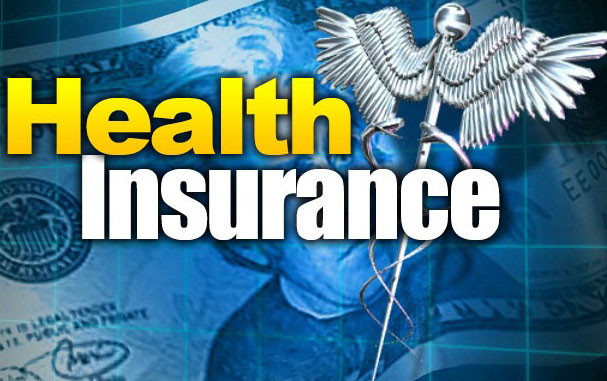Search a database of area physicians and how much money they received from Medicare
It's always been hard to shop around for a doctor. Outside of word-of-mouth and personal experience, it's nearly impossible to compare medical service providers on the type of care they provide, much less the cost.
With last week's release of Medicare billing data - for the first time in 30 years - government officials and health economists say the first steps are being taken to make those kinds of comparisons possible.
The release was hailed as the start of a new era of health care transparency.
But local doctors' groups and health experts warn that the data show only a small piece of a very large, complex puzzle that makes up health care economics - and very little about quality of care or prices that would mean much to the consumer.
"The message is clear that there will be greater financial transparency in health care going forward," said Cyril Chang, a professor of health economics at the University of Memphis.
"But as far as average consumer usability of the data, we're still not there yet."
The mammoth data release came after a lengthy legal battle between The Wall Street Journal and the federal government to make the records public.
The release gives consumers an unprecedented look at what Medicare paid to doctors and medical providers for a range of procedures during 2012 - a total of $77 billion to more than 880,000 health care providers.
In Tennessee, the highest Medicare payments went to clinical laboratories and ambulance suppliers, while eye doctors and oncologists were the highest-paid physicians on the list.
In Georgia, pain management specialists topped the list, while in Alabama, hematologists/oncologists received the highest payments.
In all, 83 doctors in Tennessee received $1 million or more in reimbursements from Medicare during 2012.
That included 11 individual doctors in the Chattanooga area and nine groups, including the Hamilton, Bradley and Rhea County public ambulance services.
Based on the number of enrollees, Tennessee's Medicare payments to providers were up to 10 percent higher than the U.S. average, according to a Bloomberg News analysis. Georgia and Alabama remained below the average.
Most of the payments went to a small group of doctors, with 2 percent accounting for a fourth of the total. Ophthalmologists were the highest-paid, even in Chattanooga, where two eye specialists with Southeastern Retina Associates each received more than $3 million in 2012.
Attempts to the reach the physicians Friday were unsuccessful. Ophthalmology groups across the country have told news outlets that special drug costs are a major part of their practice expenses.
Health advocates have stressed that such data could raise important arguments about drug costs, cut down on unnecessary treatment and eventually make doctor ratings more statistics-driven.
By making public billing practices, Medicare officials said they hope the data also will reveal fraud. They've even called on the public to look for red flags. Some of the nation's top billers already are being investigated or indicted for fraud.
"We know there is waste in the system. We know there is fraud in the system," Medicare Deputy Administrator Jon Blum told The Associated Press. "We want the public to help identify spending that doesn't make sense."
But doctors' groups, who fought against the data's release, have warned that the raw data may easily be misinterpreted.
Dr. Woody Kennedy, president of the Chattanooga and Hamilton County Medical Society, said in a statement that the medical groups support transparency. However, he said, he fears the data release may only muddy the public's understanding of how such payments work.
"The data provides no insight as to whether a physician provides quality care, or operates his or her business with integrity," the statement said. "There are many ways patients can evaluate physicians to make good choices about quality care. This data is not necessarily one of those."
For one thing, the information is limited to Medicare claims data. It does not factor in private insurance payments. And it doesn't take into account risk factors that may come into play with the older Medicare population.
The data also does not take into account how payments are meant to cover overhead, other professional staff that may have used the provider number for billings, or - most importantly - the cost of drugs.
That's what Dr. Joseph Huffstutter, a Hixson rheumatologist, said put him and two other doctors in his practice in the local "top 10" list of Medicare earners.
The three physicians at Arthritis Associates took in more than $1 million each in Medicare reimbursements in 2012, the data showed. But what the data doesn't show, Huffstutter contends, is the $600,000 the practice spends each month for complex infusible drugs administered there.
A growing number of rheumatology clinics won't perform in-office infusions because administering the drugs has become so expensive, Huffstutter said. Instead, they turn patients over to the hospital.
"I want to be a good steward," Huffstutter said. "I don't use these medications willy-nilly, but it's right at cost for what we're doing. And it's not just us with razor-thin margins. I'll just say that Walmart's not going to set up an infusion suite anytime soon."
Having a large number of Medicare patients isn't always a plus, he says, especially when congressional fights over the debt ceiling result in payment delays.
In spite of the many caveats, Chang said, the data still puts new pressure on health care professionals to be careful in how they bill Medicare, and raises important questions.
Dr. Chris Young, president of the Tennessee Medical Association and a Chattanooga anesthesiologist, said that while the data now is incomplete and still has "some gross inaccuracies," he thinks it could eventually be helpful to the industry as a whole.
Increased scrutiny could force changes to billing patterns. It may show which doctors are really good at and popular for a particular procedure, or it may show they are overusing one.
"Over time the manner in which it becomes available will improve dramatically, and people will hopefully be able to understand what the nuances are," he said.
The Associated Press contributed to this report.
Contact staff writer Kate Harrison at kharrison @timesfreepress.com or 423-757-6673.


